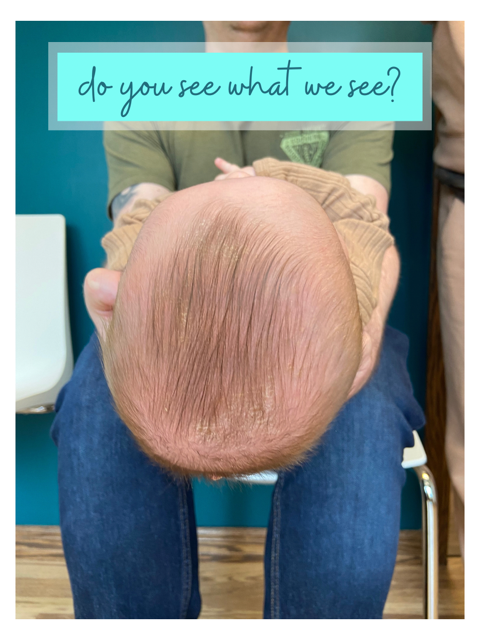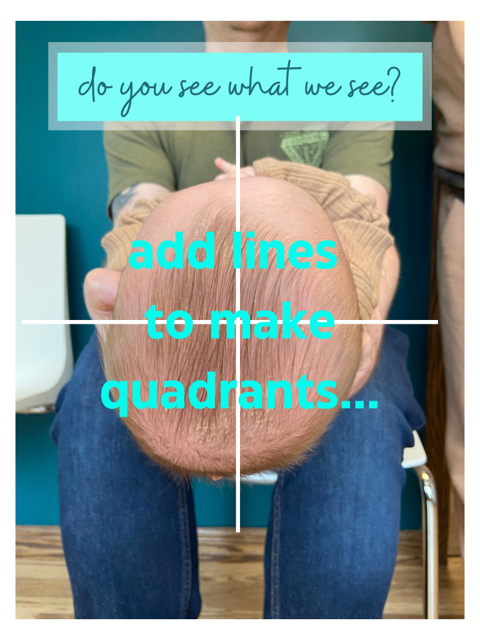Head Shape 101: How To Assess Your Baby’s Head For a Flat Spot at Home
Parents can use this simple technique to check for and monitor flat spots with the simple use of a phone.
In our experience, the first time a parent becomes aware of a flat spot on their baby’s head is either from: 1) a health care practitioner, or 2) a friend or family member who’s own baby needed head shape correction and so it is on their “radar” a bit more than others. But once the mention of a flat spot occurs, it can be confusing to know what the next best action is to take.
If you’re worried about your baby’s head shape, a great place to start is to take a few strategically-positioned photos and do a little examination. And that is exactly what we will help you do in this article. So grab your phone, grab your baby, and let’s get going.
Step One: Take a photo from a top-down view with just the tip of the nose showing.
This can be done in a few ways:
hold your baby face-up on your lap (as pictured above) and have someone else take the photo,
secure your baby in a seated or upright position and take the photo from above,
hold your baby in your arm as if you are feeding (cradle hold) and have someone take a photo from the side.
TIP: if you’re struggling to keep your baby still long enough for a photo, take a video and then screenshot the best view with just the tip of the nose showing.
Step Two: Add a vertical line from the tip of the nose through the back of the head and a horizontal line from ear-to-ear / in the middle of the head.
We like to use the “edit” and “mark up” sections in our photos to add lines to the picture. There are apps out there that can help with placing lines as well.
Note: It can be tough to see the ears from this view, so do your best to find the middle of the head when placing the horizontal line.
Step Three: Compare quadrants from right-to-left.
This is the analysis part, so get your eyes ready! We are looking for three main factors:
Volume differences
this refers to how “full” the quadrant looks
less volume = flatter quadrant
Sloping differences
this refers to the angle the skull takes from the vertical line to the horizontal line.
more slope = flat spot
Shifting forehead
look for if one side of the forehead is “higher” or more forward than the other
In the example above, here is what we see:
the bottom right quadrant has much less volume than the left
there is more sloping from the vertical line to the horizontal line on the bottom right side
the right side of the forehead is shifted forward
This baby has a flat spot on the right side of the back of his head and on the left side of the front of his head. Although you can’t see it in the picture, this baby’s right ear is also shifted forward because of the flatness on the back right area of his head.
Step Four: Schedule a discovery call and/or consultation.
Question: When is the best time to seek the expertise and guidance of a cranial clinic?
Answer: Right away after noticing a flat spot!
There are many opportunities to correct head shape whether your baby is 1 month old or 1 year old. Many pediatricians offer the wait-and-see approach, but we truly believe that early intervention is the gold star of treatment. We hear over and over again from parents how much they learn from our consultations and how much peace that appointment offers regardless of treatment recommendations.
If you want to schedule a free consultation or explore all of the services we provide, visit our services page. We are here to help!




